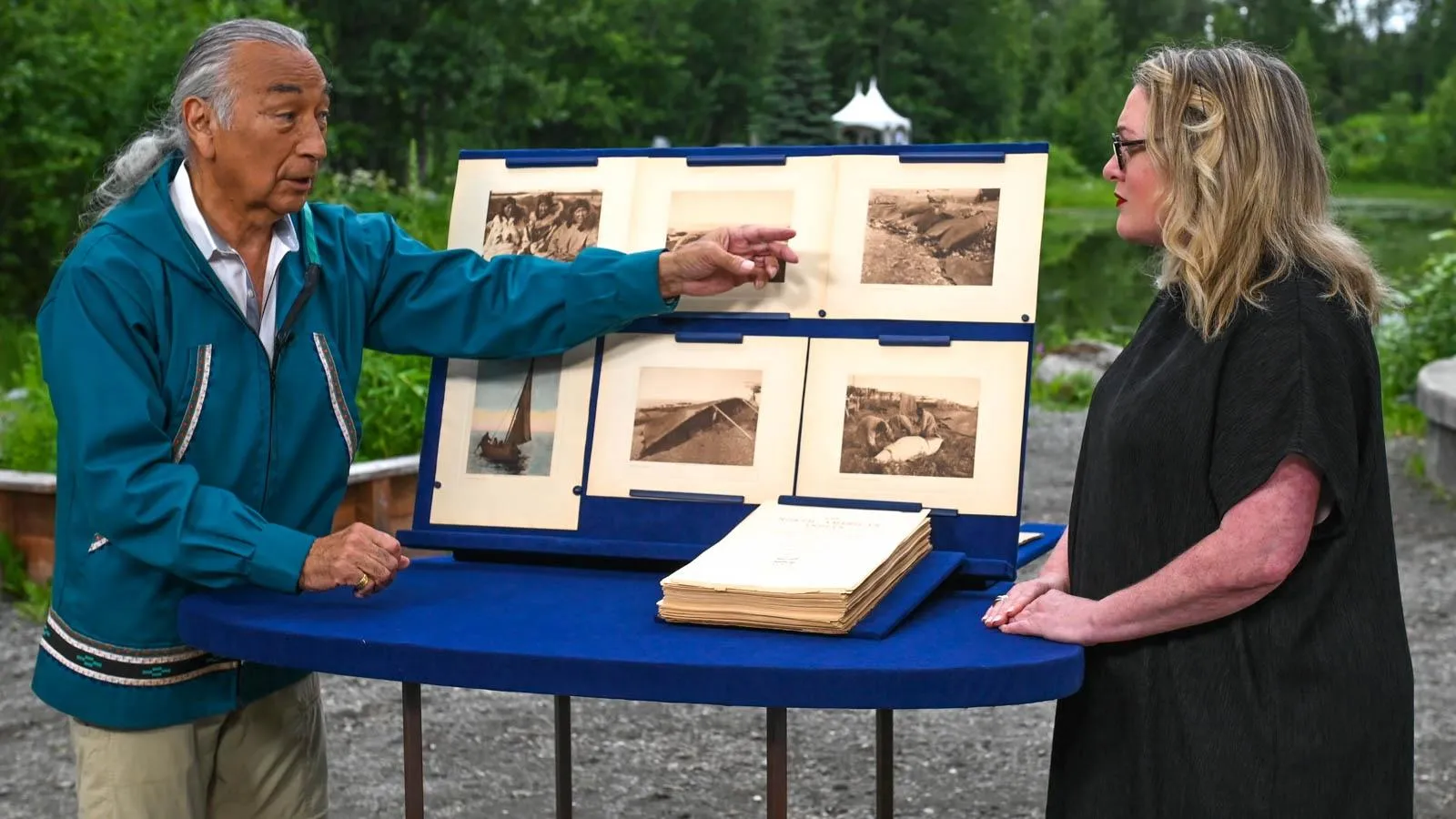GUEST: This has been in my family for quite a few generations. My great-grandmother got it in Skagway in the '20s. My mother said it was a wedding gift, and my father said it was purchased, uh, from a Native lady.
APPRAISER: And what do you call it?
GUEST: Chilkat blanket.
APPRAISER: Yeah. And do you know what it's made out of?
GUEST: I think it's made out of goat hair.
APPRAISER: Yes, mountain goat.
GUEST: Mountain goat.
APPRAISER: And also spun cedar bark. It's hard to believe when you feel how soft it is...
GUEST: Mm-hmm.
APPRAISER: ...that it's spun cedar bark or mountain goat, for that matter, which are native to this area. Made by the Chilkat. And these weavings are like crests, like a coat of arms, or... Mm. That's what these are. People who would know what these mean from that tribe would recognize, "Oh, yeah, this is so and so's family." You have these ravens. You have a bear. There are several different figures that are on here that make it up, and it has this beautiful blue. Traditionally, it would have been indigo. This is probably a commercial dye.
GUEST: Mm-hmm.
APPRAISER: And the locks were spun a little bit unevenly, so you can see a change over there in the color, and it's had a little light fading. So if you flip it over... That's the original color.
GUEST: It's so beautiful, yeah.
APPRAISER: So this was very bright when it was created. As far as I know, it's the only weaving style in the world that does these curvilinear forms.
GUEST: Hm.
APPRAISER: You grew up with this hanging on the wall?
GUEST: We did, yeah. Everybody loved it, yeah. It's a, a part of our family.
APPRAISER: That says a whole lot. And the fact that you still have a photograph of it hanging on the wall. Who, who is in the bottom picture?
GUEST: This is my great-grandparents, and they gave the, the blanket to my grandparents, who had it in their house in the '50s, in the '40s and '50s, and we had ours up into the '70s, and it started to lose some of its color, so we decided to pull it off, and, you know, stop that damage from happening. We just rolled it up, and I put it in a closet. And it still looks good, though, you know? But...
APPRAISER: Oh, it's, it's wonderful. These took a long time to make, months and months.
GUEST: Wow.
APPRAISER: Judging by the way it's made, the colors, the dye stock, it was probably made sometime between the late 1890s and the 1920s. It is not an adult-sized blanket. It's a smaller blanket, probably for a youth. If this were to come up at auction, I would say probably $25,000 to $30,000.
GUEST: Wow. Wow, that's, that's a lot more than I thought it was gonna be.
APPRAISER: It's culturally a significant piece. If it was worth ten dollars, it's worth taking care of no matter what.
GUEST: Yeah.













